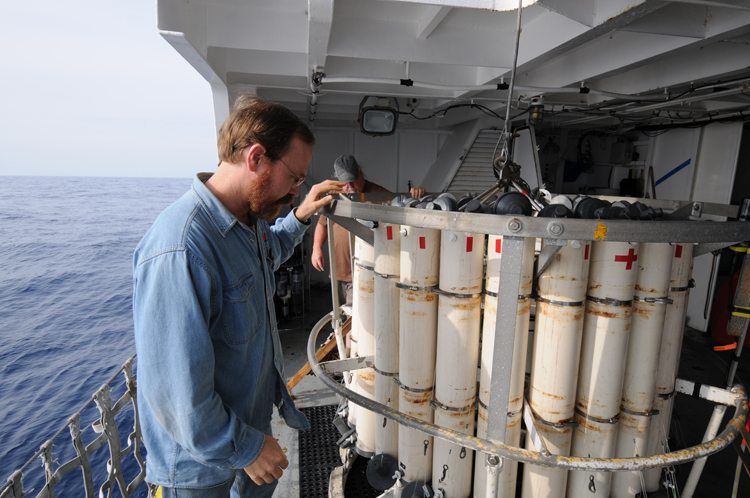Fukushima ocean radiation could pose sleeper threat


Scientists have determined that the unprecedented release of radioactivity into the Pacific Ocean from the Fukushima nuclear disaster poses no direct exposure threat to people, but caution that the accumulated fallout lying in sediment is a potential danger for decades to come.
The findings were published in a report,Impacts of the Fukushima Nuclear Power Plants on Marine Radioactivity, on Wednesday. Levels of cesium and iodine peaked in April, a month after the core meltdowns when seawater used to cool the reactors and spent fuel rods was pumped out of the facility into the nearby ocean.
Levels of radioactive cesium peaked at 50 million times normal levels, becoming the largest accidental release of radiation into the ocean in history, said Woods Hole Oceanographic Institution chemist Ken Buesseler.
Buesseler and two Japanese colleagues, Michio Aoyama of the Meteorological Research Institute and Masao Fukasawa of the Japan Agency for Marine-Earth Science and Technology, collaborated on the report. The Gordon and Betty Moore Foundation and the National Science Foundation’s Chemical Oceanography program funded the research.
The concentrations of cesium offshore were much higher than those measured in the ocean after the Chernobyl accident 25 years ago, Buesseler added. However, unlike Chernobyl, the ocean mixing processes “rapidly diluted” radiation off the Northwest coast of Japan.
The fallout decreased by a factor of 1000 by May as the ocean and the “radionuclide source that has dramatically abated,” diluted the fallout, Woods Hole noted in a press release. Still, radiation remained 10,000 times higher than baseline levels measured a year before the disaster through July.
It is highly likely that there were continued direct releases from the reactors or storage tanks, as well as indirect releases from contaminated groundwater or coastal sediments, according to the report.
Tokyo Electric Power Company, the owners of the Fukushima reactors, disclosed that 45 tons of highly radioactive wastewater containing strontium escaped from a treatment facility this past weekend.
“This latest news suggests that the releases have not ended, so that is of concern. If the contaminants end up in the marine sediments/muds, then they will remain there for decades to come, and thus potentially be of concern for benthic biota and consumers of benthic fish/shell fish, i.e. any local filter feeders near the source waters at the coast,” said Buesseler.
Strontium has a similar 30-year half-life to cesium, and is linked to bone cancer. Buesseler noted that small fish eaten with the bones (vs. filets) could be enriched with radiation, but said that measuring the isotopes was challenging and could take time.
While researchers have some knowledge of the effects of intentional man-made releases of radioactivity into the ocean, the long-term environmental consequences of an incident as significant as Fukushima is unknown.
“Nuclear testing impacts were generally minor, i.e. the Pacific Ocean is safe today for swimming, fishing, etc. despite our much larger radionuclide inputs due to US testing on the Marshall Islands,” Buesseler said.
“The craters in the lagoons on those islands are still contaminated and production of food on these islands is not allowed in hot spots. Thus Individual testing events caused local contamination that was of significant health concern at the time. Effects on the marine environment were locally in time/space quite large, but in contest of the whole Pacific and decades later, quite minor. I expect the same today for the ocean off Japan.”
Related on SmartPlanet:
What the NRC really knew about Fukushima
Nuclear meltdowns nearly made northern Japan uninhabitable
Do we need to worry about radiation in our milk?
Elevated radiation levels widespread in eastern Japan
Test show Japanese child exposed to radiation
Rice crops threatened by radiation
This post was originally published on Smartplanet.com